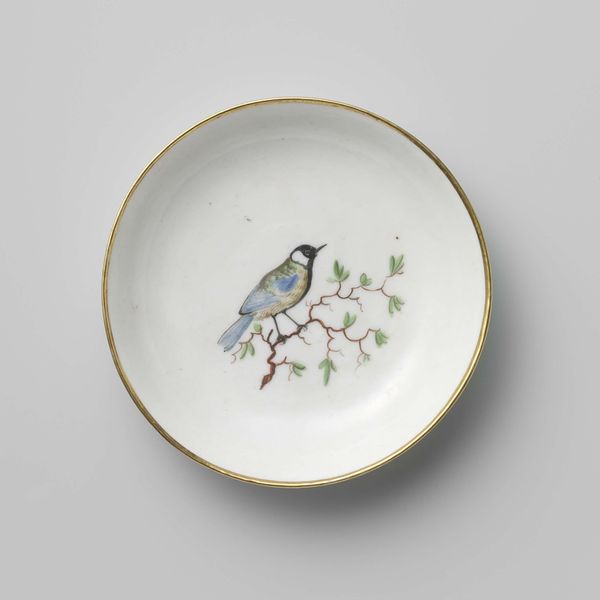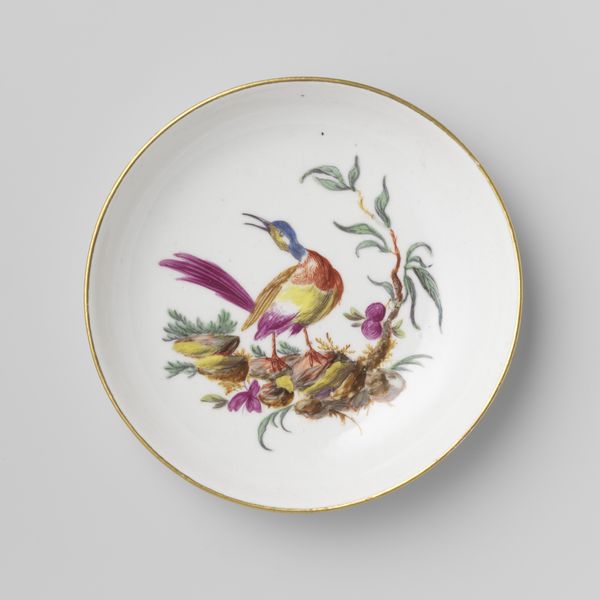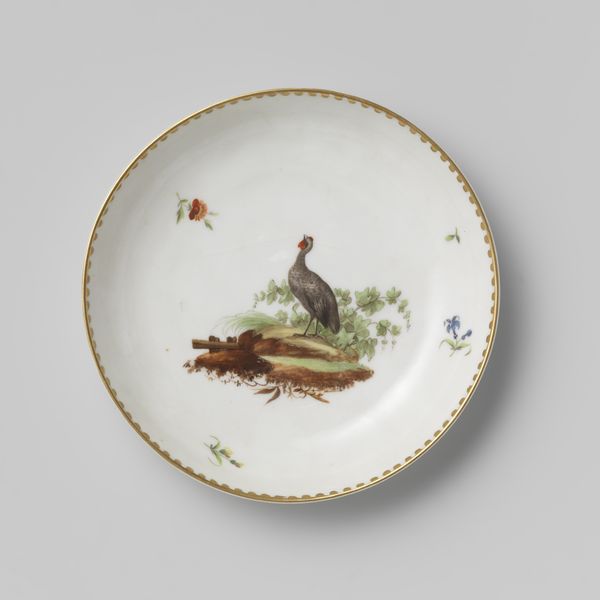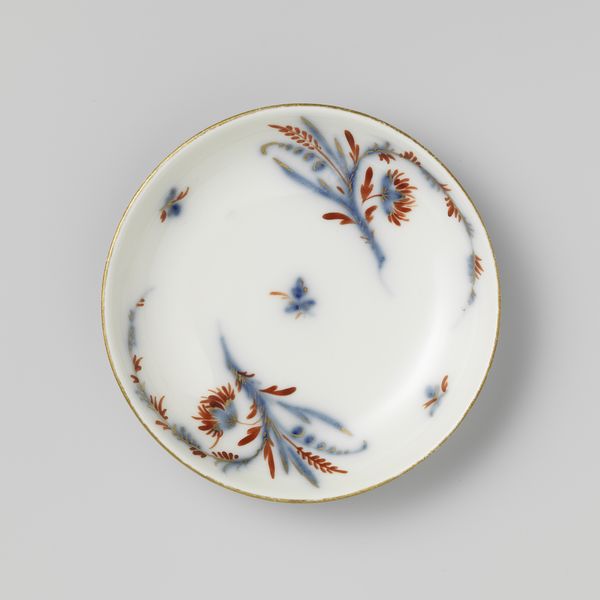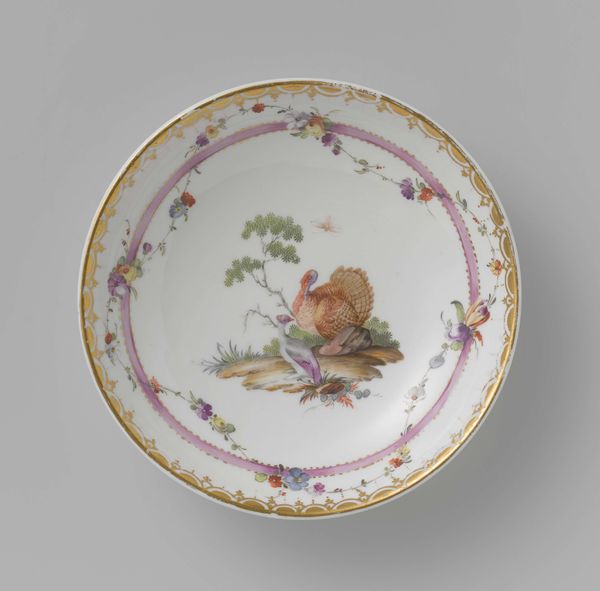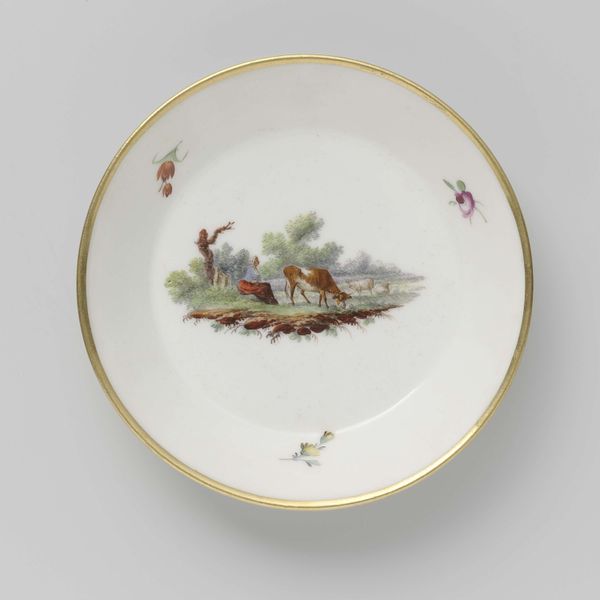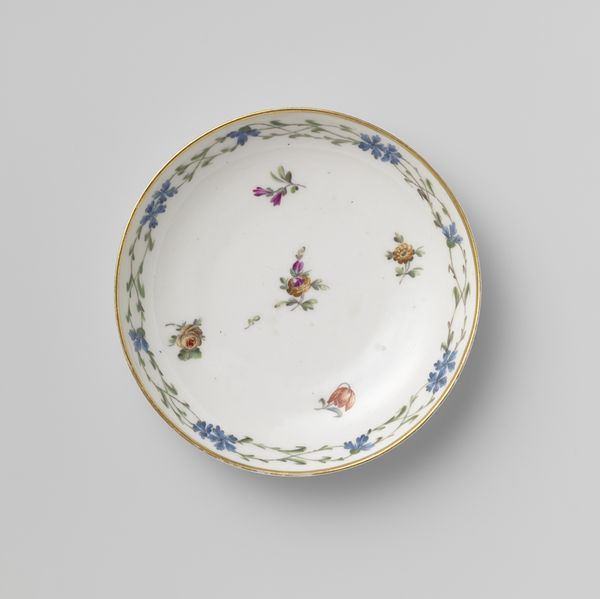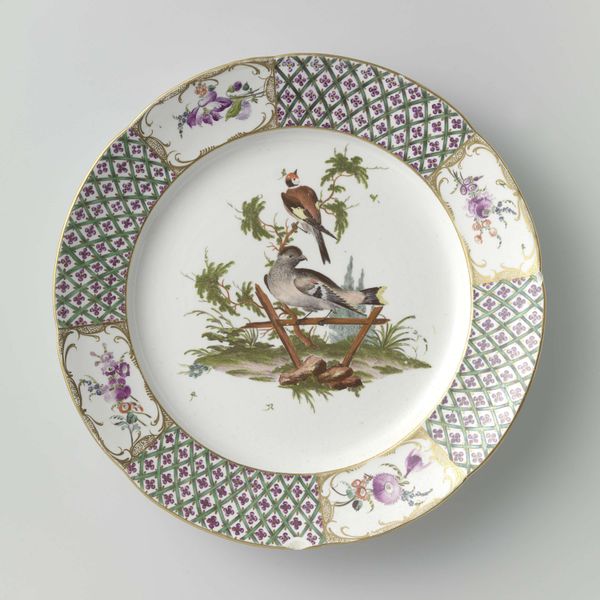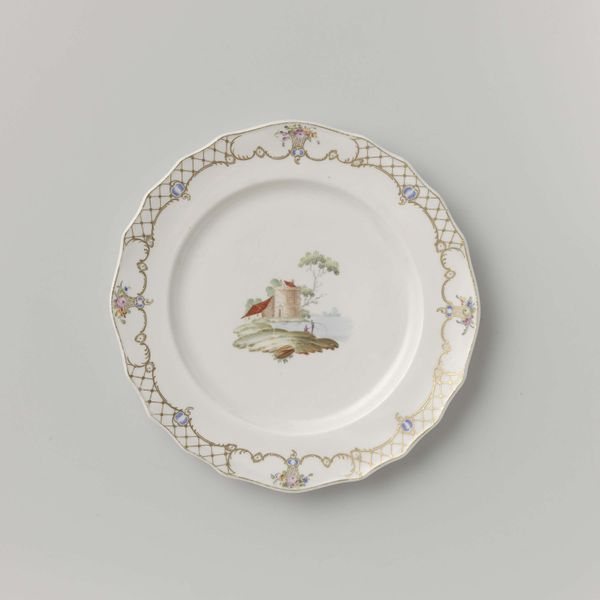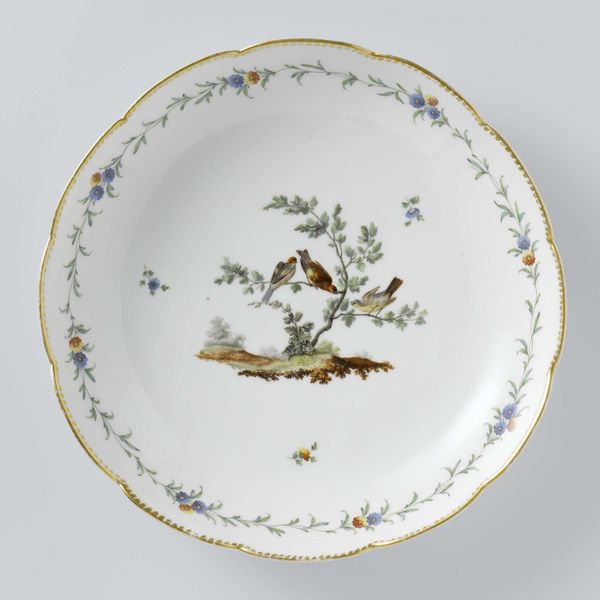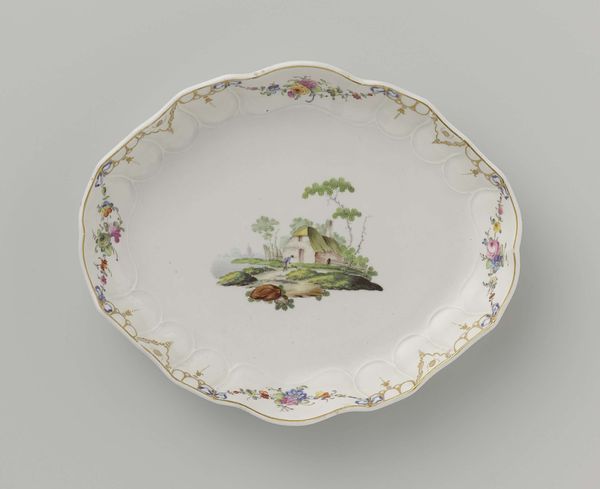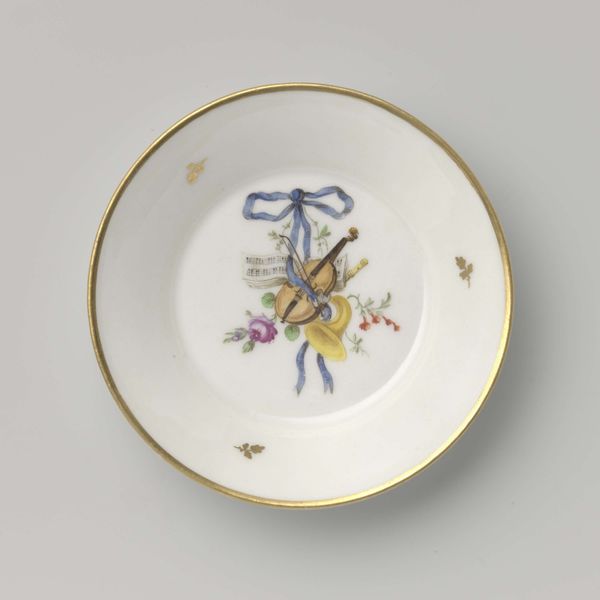
painting, ceramic, porcelain
#
neoclacissism
#
painting
#
ceramic
#
bird
#
porcelain
#
decorative-art
Dimensions: height 2.6 cm, diameter 13 cm
Copyright: Rijks Museum: Open Domain
Editor: Here we have a porcelain schotel, or saucer, made by Koninklijke Porseleinfabriek Dommer & Co. between 1809 and 1814. What strikes me is the simple elegance of this piece. What story do you think it has to tell? Curator: I see this delicate porcelain saucer, with its unassuming bird motif, as a subtle reflection of early 19th-century society. Porcelain, especially pieces like this that reflect neoclassicism, speaks volumes about class, trade, and even colonial aspirations of the time. The image of the bird can also be analyzed through gender. Editor: Gender? How so? Curator: Birds were often seen as symbolic stand-ins for women in art during this era; the saucer then transforms from a simple decorative item to a medium exploring socially accepted limitations, desires for freedom, or ideas about femininity and fragility. Consider its intended use – a piece for the domestic space, reinforcing the idea of women's roles during this era. Do you agree with that? Editor: I hadn't thought about the implications of its setting! Seeing it now, I wonder how such a seemingly harmless object could speak to more complicated societal structures. Curator: It's this precise tension—the space between art and context —that brings a piece to life, challenging our conventional readings. Even the seemingly innocuous design choices have something to say about historical, social, and political contexts, provided we have the tools to ask the right questions. Editor: This makes me reconsider all decorative art... the possibilities seem endless now. Thank you. Curator: And thank you. Considering art this way helps us unearth narratives we never thought existed!
Comments
No comments
Be the first to comment and join the conversation on the ultimate creative platform.
